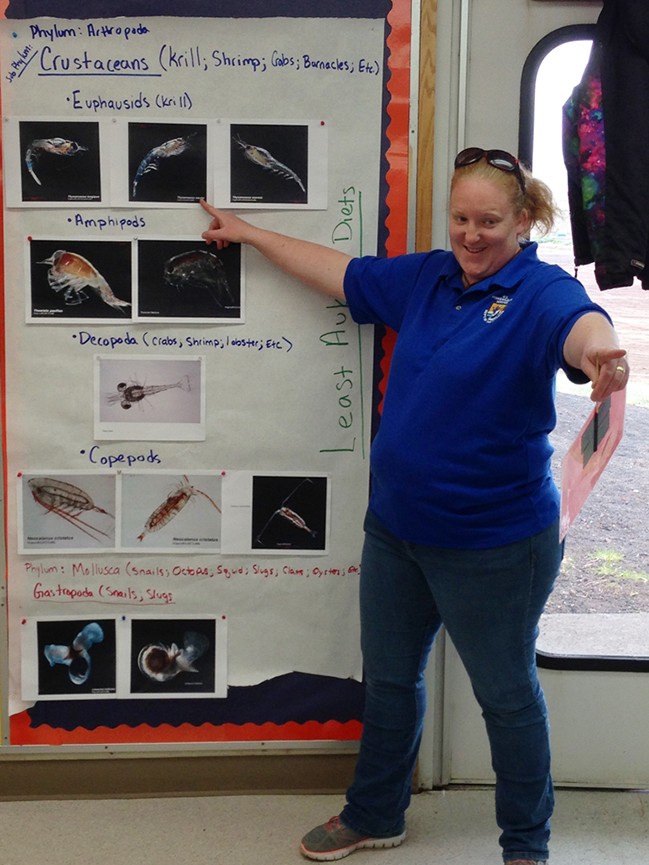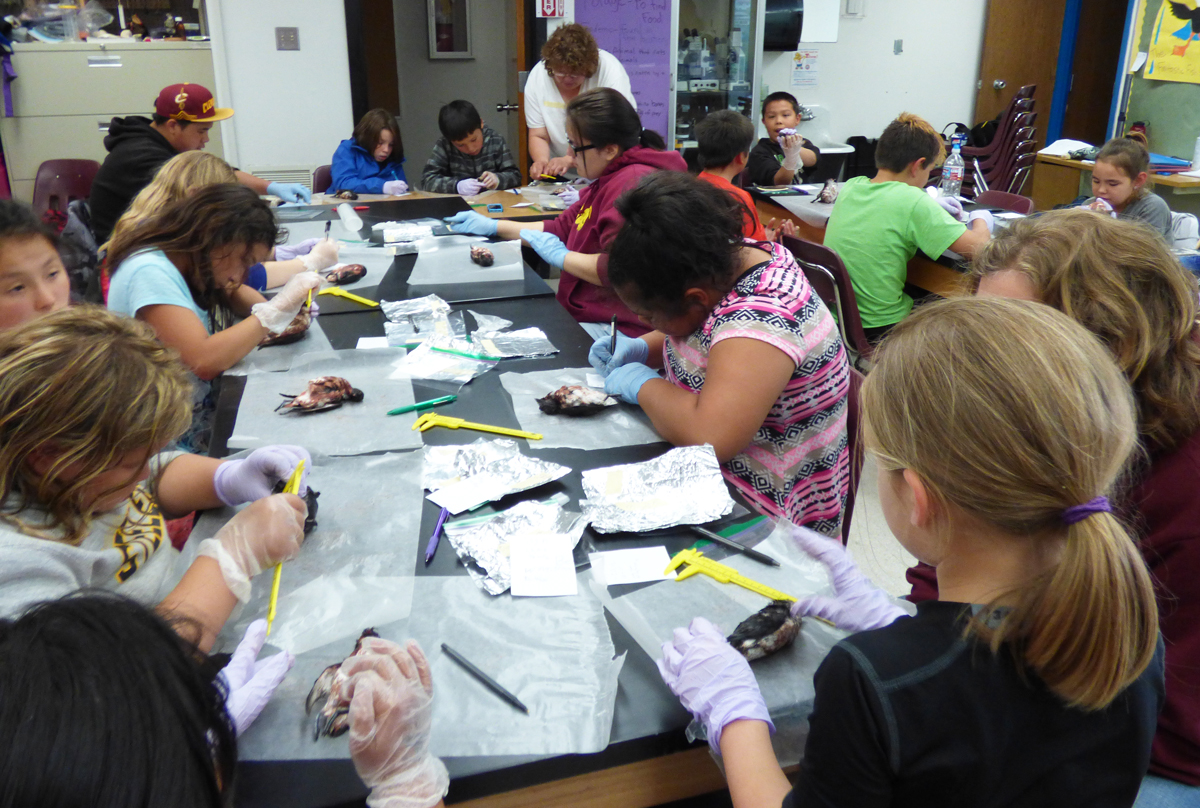Kendra Bush, Education Specialist at the Alaska Maritime National Wildlife Refuge, shares this report about outreach and education in this incredible Refuge:
Alaska Maritime Refuge is a vast 3.4 million acres stretching thousands of miles from one corner of Alaska to the other. It encompasses an estimated 2500 islands and headlands and has thousands of miles of coastlines within its borders. It could easily be argued that is has some of the most remote wilderness areas of any other refuge within the U.S. It is also home to thousands of seabirds and marine mammals alike. Its’ breathtaking islands and ocean vistas and staggering numbers of wildlife that depend on its protected habitats are some of the most awe inspiring visuals a person can experience. However, due to its extreme remoteness, it is also probably one of the most difficult refuges to access. It is the job of the refuge’s visitor services staff to share these wild and remote places with the American public.
The outreach and education staff at the refuge consists of a team made up of both employed staff members and a highly valued group of volunteers that are recruited through a variety of different ways. Many of the volunteers that work as outreach staff at the refuge’s visitor center in Homer Alaska are retired Alaskans contributing their time to help share the wonders of Alaska’s natural resources. The refuge also has an extensive career development programs where youth and young adults are able to volunteer as interns or take on seasonal employment opportunities to help them develop their professional skills and further their careers. One such program, the Youth Conservation Corp., is a seasonal youth employment program that recruits youth from rural communities and villages associated with the refuge and gives them the opportunity to work for the refuge.

There are many methods used by refuge staff to try and bring the wilderness of the refuge to those who would otherwise not be able to experience it. In addition to the refuge’s visitor center, techniques such as photos, films, newspaper articles, virtual reality experiences and social media posts are all successful tools that have been used to share the beauty and wildlife found within the remote wilderness areas of the refuge. In addition, the refuge also has an extensive environmental education program that hosts grade specific curriculum and supports science and culture camps in refuge communities.

